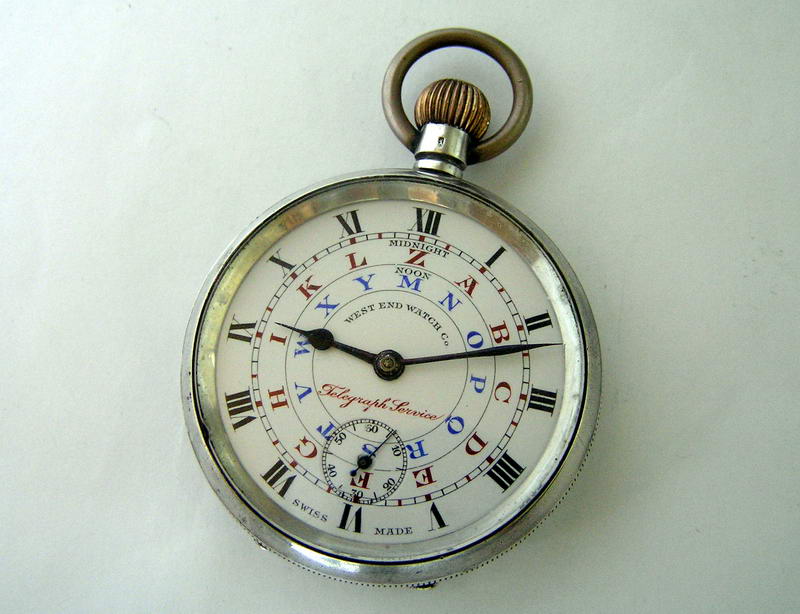Цитата:
Сообщение от German


Зачем две буквенные шкалы на эмалевом циферблате????? |
Время на телеграфе кодировалось с помощью букв нетривиальным образом. Настолько нетривиальным, что для помощи телеграфистам в Британской армии, например, были в 1870-м году "приняты на вооружение" специальные часы телеграфиста, судя по описанию, устренные подобно Вашим:
2151 Watch
Watch in German silver case with strap and key, for telegrapher's and signallers of the Royal Engineers. Submitted by Royal Engineer Committee.
- the cases of the watch are of German silver. It is keyless and has a removable outer case. The face of the watch itself and that of the case, each bear the ordinary Roman numerals indicating the hours, and also is an inner circle, the corresponding letters of the telegraph time code. The face of the case has a circular aperture in the centre, through which the hands and the circle of letters of the telegraph code on the face of the watch are visible.
Кстати, автор статьи (
http://www.royalsignals.org.uk/photos/watch.htm ), цитирующий войсковой циркуляр, самих часов не видел, и теряется в догадках, чему этот параграф может соответствовать. Что неудивительно

Вот описание телеграфного time code с примерами, в котором, наверное, можно разобраться, хотя мне лично это не удалось

Example:--
Time, 5 h. 52 m.
Code Time, E K S
The twelve letters from A to M (J excepted) denote the twelve hours. They also denote the twelve periods of five minutes of which each hour is composed. The intervening four minutes are denoted by the letters R S W X. The letters sent singly indicate the hours; send in combinations of two, they represent the hours and certain periods of five minutes; send in connection with the intermediate letters R S W X, they represent hours and minutes. The letters A.M. or P.M., if used, are signalled in conjunction with the Code, thus:
M is 12.
B is 2.
F is 6.
I is 9.
MF is 12.30.
BI is 2.45
MFS is 12.32
BIX is 2.49
MFSAM is 12.32 A.M.
BIXPM is 2.49 P.M






















 Похожие темы
Похожие темы